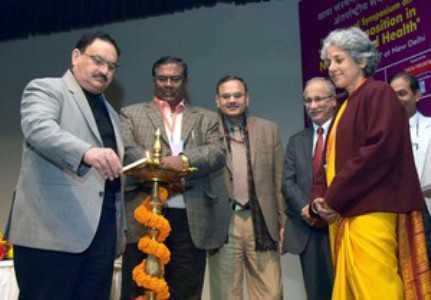Team L&M
India now joins the elite league of nations having its own complete food composition data base.
The new Indian Food Composition Tables (IFCT), a reference book for all kinds of nutritional evaluations, including clinical practice for analyzing the diets of patients and devising special diets for them, was released by Union Minister of Health and Family Welfare J P Nadda at the recently held International Symposium on ‘Food Composition in Nutrition and Health. The document has been prepared by the Indian Council of Medical Research (ICMR) in association with the National Institute of Nutrition (NIN), Hyderabad.
The comprehensive nutrient data bank will cater to the needs of researchers and policy makers for alleviating the nutritional deficiency and the associated disorders in the country. “Policy makers and researchers will now get good insights into what people are consuming in India, however we also need to explore how this scientific document will be used by the common man,” said the Minister, directing the officials to create a mobile app that can be used by everyone to enhance their well-being.
“I am sure that this database, with its precise and wide nutritional information of key foods consumed all across the country will help a great deal in cutting down inappropriate costs and inefficient use of food resources such that the target of attaining nutritional security of poor is achieved,” he added.
The Indian national food sampling and analysis program was initiated by the Indian Council of Medical Research in 2011 in order to bring out a totally new “Indian Food Composition Tables” as an authoritative source of food composition data in India wherein key foods were prioritized and analyzed for a comprehensive set of nutrients at the National Institute of Nutrition (NIN), Hyderabad.
IFCT, popularly known as Nutritive Value of Indian Foods (NVIF) contains data which was sampled, analyzed and categorized on a massive scale after 45 years of long gap. The data enables to monitor food and nutrient availability in the country. It serves as a handbook for the dieticians, planners, medical & health professionals and students of nutrition field. It forms a basis for development of dietary guidelines, framing of food regulations & food safety, consumer education and educational materials. Food industry uses this data for labeling & nutrient claims, product development and reformulation. IFCT guides in planning of institutional diets, sports nutrition and food service industry.
